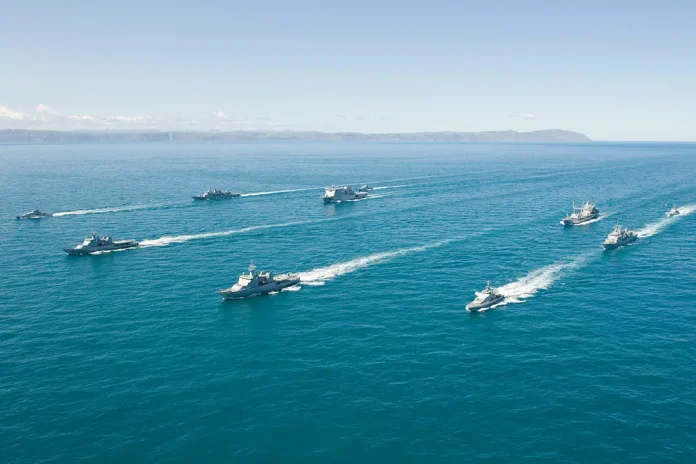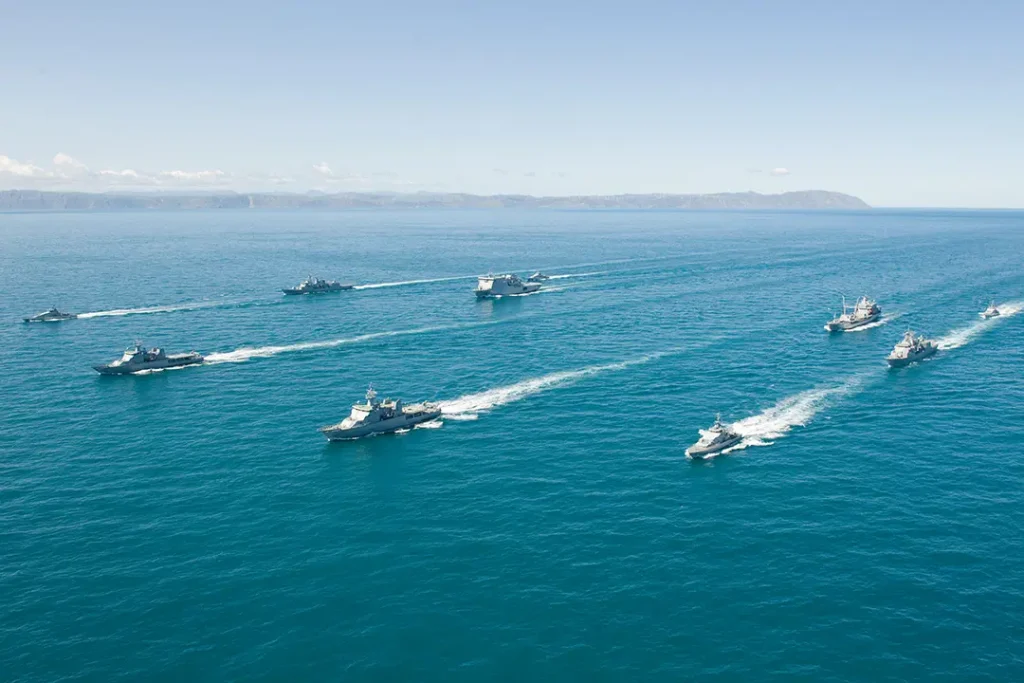
A single aircraft carrier can shift the balance of power in a contested sea. When that carrier is the USS Nimitz, operating alongside Japanese and Philippine warships in waters claimed by China, the strategic stakes rise sharply. This latest joint exercise has triggered a stern warning from Beijing, underscoring the volatile mix of military capability, legal disputes, and geopolitical rivalry now concentrated in the South China Sea.
Overlapping territorial claims, abundant resources, and critical shipping lanes have long made the region a persistent flashpoint between China and US-aligned states. The introduction into service of China’s newest carrier, the CNS Fujian, and the patrolling of disputed waters by its bomber formations are increasing tension in the contest over maritime dominance. Here are nine key developments that define the current confrontation and its broader implications.

1. USS Nimitz Leads Trilateral Naval Drill
The USS Nimitz Carrier Strike Group joined Japanese and Philippine vessels for the latest Multilateral Maritime Cooperative Activity, a two-day operation in the West Philippine Sea. Nine ships participated in the maneuver, including missile-capable frigates BRP Jose Rizal and BRP Antonio Luna, conducting anti-submarine warfare, aerial operations, and cross-deck landings. The military said the exercise demonstrated “collective defense readiness” and commitment to a rules-based order in the Indo-Pacific.

2. China’s Stern Warning to Manila
The People’s Liberation Army Southern Theater Command called on the Philippines to “immediately stop provoking incidents and escalating tensions.” Senior Colonel Tian Junli accused Manila of “colluding” with external forces, warning that any attempt to “infringe or cause trouble” would not succeed. The rhetoric reflects Beijing’s view that foreign-backed patrols undermine regional stability, even as it continues to assert sweeping claims over most of the South China Sea.
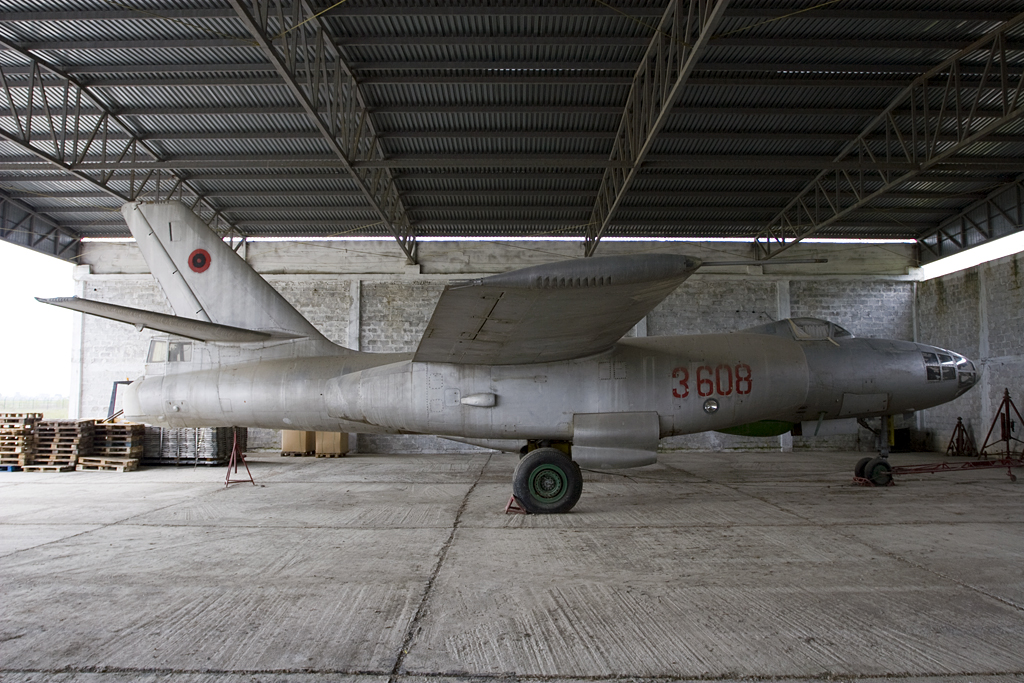
3. First-Ever Bomber Formation Patrol
On the first day of the exercises, China sent a bomber formation over the disputed waters, which state media described as a warning to the Philippines. According to military expert Song Zhongping, speaking to the Global Times, the bombers can carry out saturation strikes against big surface ships, a signal of the will to demonstrate strike capabilities. This marked the first time the PLA had publicly announced such a patrol in the South China Sea and brought new dimensions in its deterrence posture.

4. CNS Fujian: China’s Most Advanced Carrier
Commissioned earlier this month, the CNS Fujian represents a leap in Chinese carrier capability. Equipped with electromagnetic catapults, it can launch heavier aircraft like the stealth J-35 and KJ-600 early warning planes. Though of over 80,000-ton displacement, it is smaller than the USS Gerald R. Ford but far more capable than China’s earlier ski-jump carriers. Analysts expect years of trials before it matches the US operational tempo, but its presence at Hainan’s Yulin Naval Base positions it close to contested waters.

5. US Freedom of Navigation Operations
Routine patrols by the US Navy continue to challenge China’s nine-dash line claims. As Rear Admiral Fred Goldhammer underlined, the Nimitz Strike Group operates “wherever international law allows,” to reinforce freedom of navigation and overflight. The operations indeed fall under customary international law under UNCLOS, but Washington never ratified that treaty. Beijing reacts, however, by calling such missions violations of its sovereignty and using domestic laws to justify restrictions.

6. Legal Disputes Under UNCLOS
In 2016, a UN-backed tribunal ruled against China’s expansive claims, declaring they were bereft of any legal basis under UNCLOS. China, a signatory, rejects the ruling. The US, not a party to UNCLOS, enforces its provisions through naval operations. China’s interpretation melds international law together with domestic legislation, as a means of solidifying its control over military activities within its EEZ. This legal standoff fuels incidents at sea, from cable-cutting to dangerous intercepts.
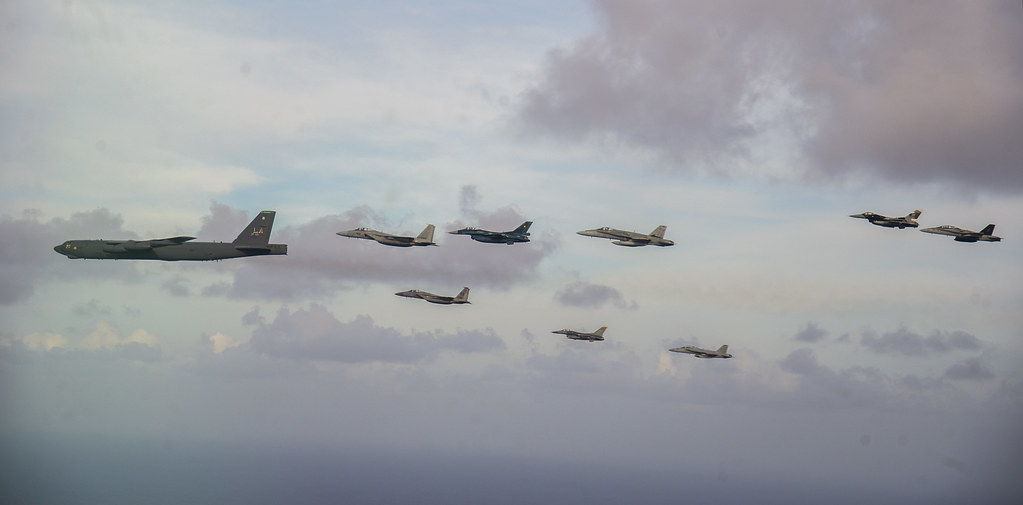
7. Expanding Alliance Networks
The Philippines’ defense engagement has expanded beyond the US treaty alliance through the country’s signing of Visiting Forces Agreements with Australia, New Zealand, Canada, and Japan. The Reciprocal Access Agreement with Tokyo, effective September 2025, will allow for joint training on each other’s territory. These alliances seek to enhance deterrence and interoperability, complicating China’s calculus in the region.
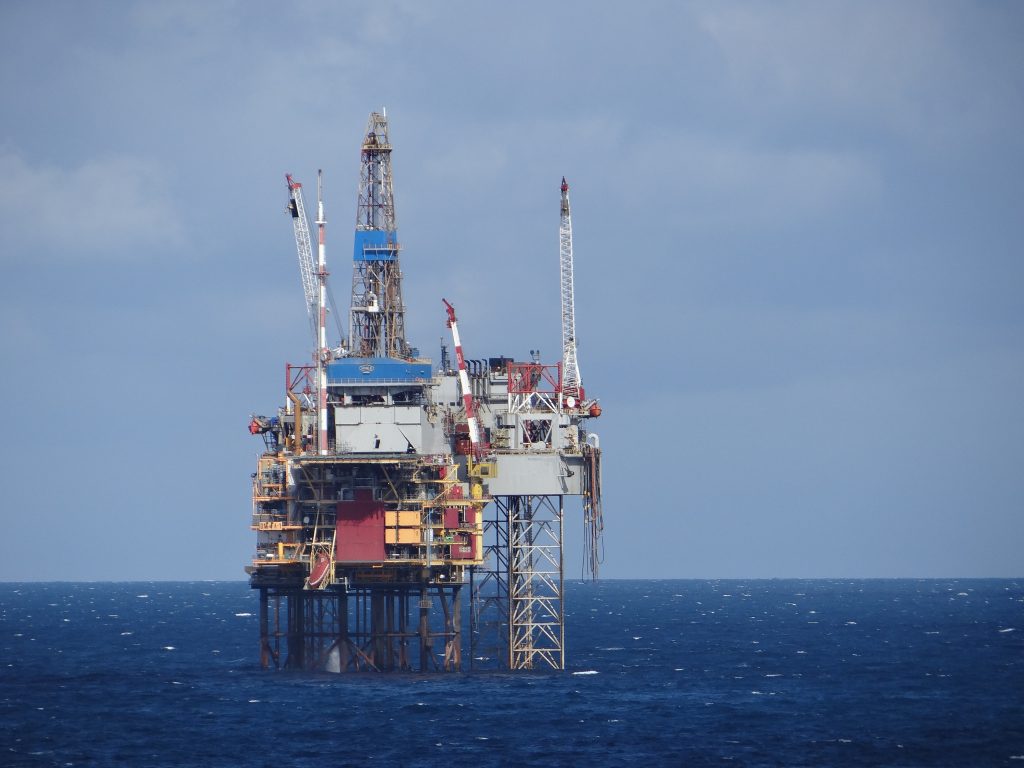
8. Resource and Strategic Stakes
The South China Sea is thought to have 11 billion barrels of oil and 190 trillion cubic feet of natural gas, plus rich fishing grounds. Control over the resources and sea lanes-through which trillions in trade pass annually-adds economic weight to the military contest. China’s fortified outposts in the Spratly and Paracel Islands enhance its ability to project power and monitor maritime traffic.
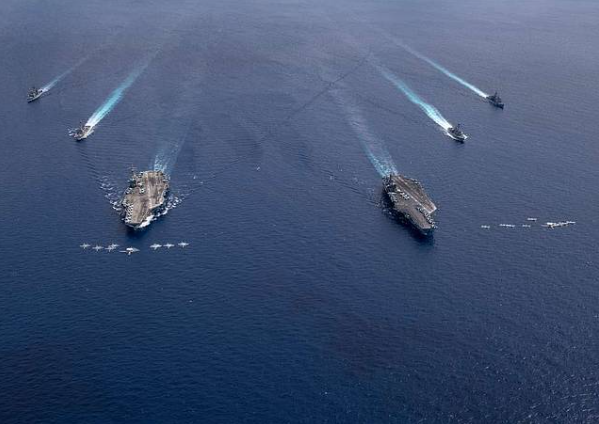
9. Future Carrier Force Ambitions
Chinese naval planners reportedly contemplate a six-carrier fleet, with the next vessel possibly nuclear-powered. The lessons from the Fujian’s trials will shape the future designs. Although the US continues to retain a numerical and experiential edge with 11 nuclear-powered carriers, China’s incremental approach has already extended its reach beyond the first island chain, and sustained carrier operations could eventually enable Beijing to challenge US dominance in the western Pacific.
The latest confrontation in the South China Sea serves as a reminder of a strategic reality: military exercises, legal disputes, and alliance-building are merging into a continuous competition for maritime hegemony. With China increasing its carrier fleet and sending bomber patrols and the US developing regional partnerships more closely, miscalculations become more probable. For defense analysts and policymakers, the challenge now is how to keep rivalries in check without allowing them to escalate into open conflict-while safeguarding the principles of freedom of navigation that underpin global trade and security.
